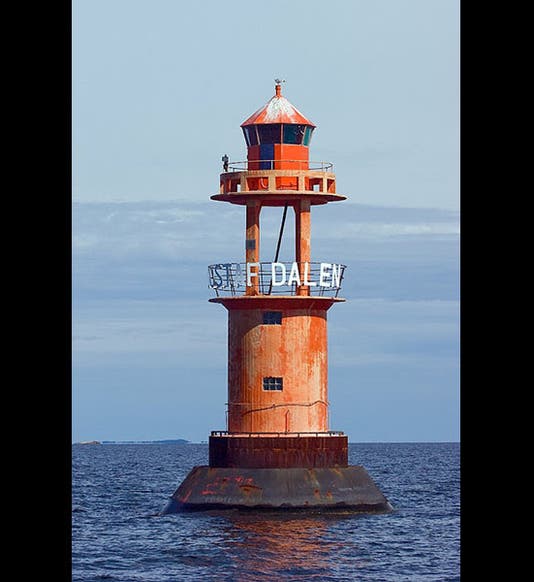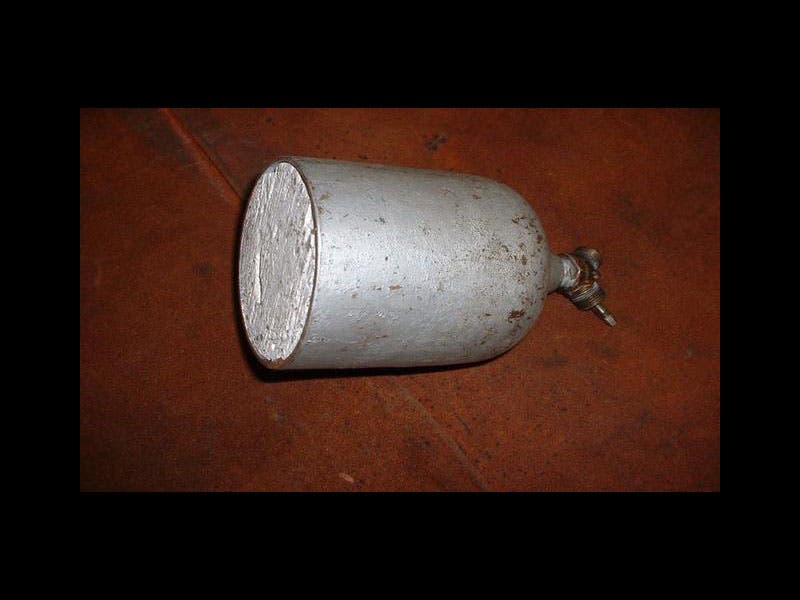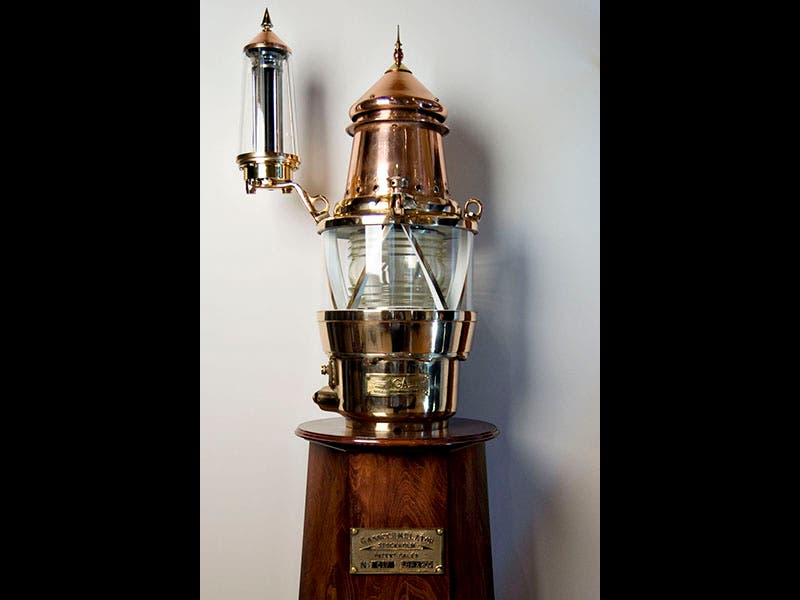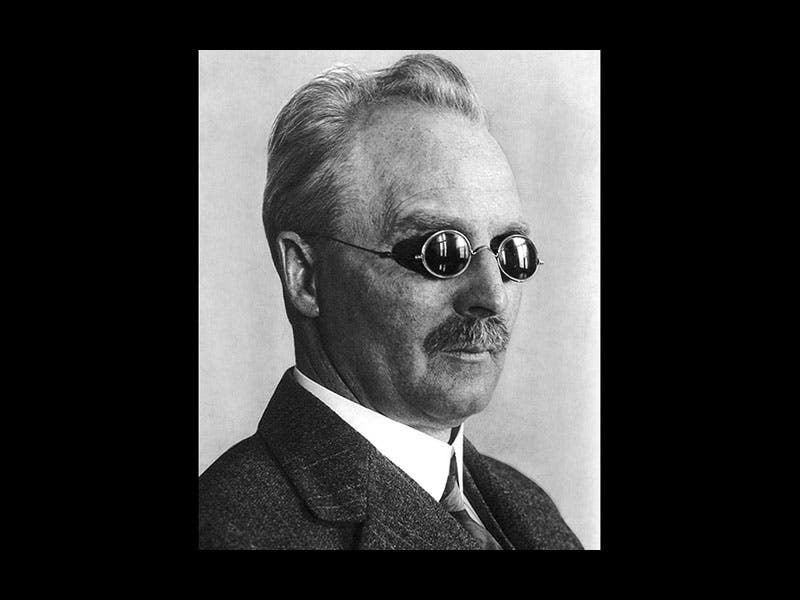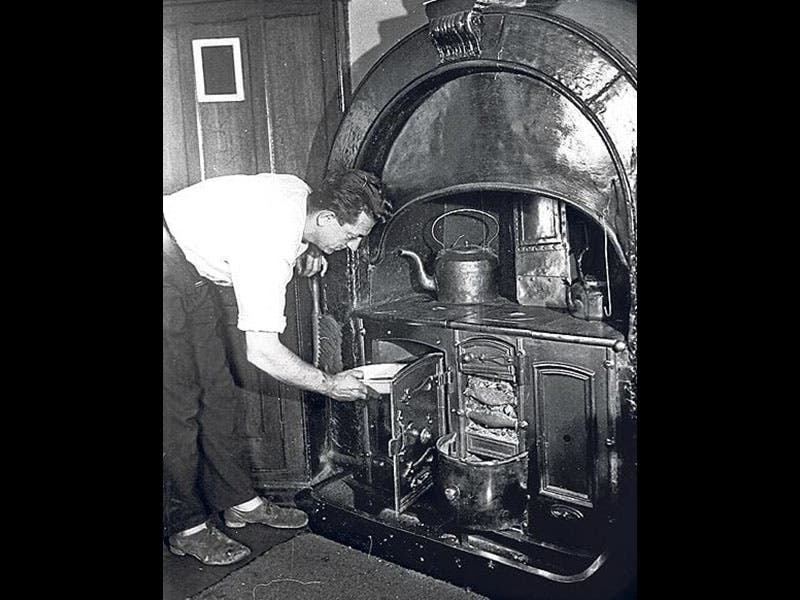Scientist of the Day - Gustaf Dalén
Gustaf Dalén, a Swedish inventor, was born Nov. 30, 1869; we see above a portrait of the young man at age 26, with a turn-of-the-century bicycle (second image). In the late 19th century, lighthouses were an expensive proposition. They had to be manned, lit and extinguished by hand, and continuously supplied with propane fuel, which gave an inferior light. It was known that acetylene gave a much brighter light, but acetylene was extremely hazardous to bottle and ship, since it was so explosive. Dalen helped found a Swedish firm known as AGA, and he tasked himself with devising an acetylene lighthouse. This required three separate inventions. First, Dalen developed a porous substance that he named agamassan (AGA + massan, Swedish for compound). Agamassan was made of asbestos and diatomaceous earth, a fine powdery limestone, and if you were to stuff a bottle with agamassan and then wet it down with acetone, you can introduce acetylene under pressure, and it will dissolve in the acetone and fill up the pores of the agamassan. You may then drop the bottle off a cliff with no adverse effects, and if you open the valve, acetylene will emerge and everything else will stay in the tank. So acetylene could now be shipped and stored safely. A photo above shows an acetylene tank cut in half, revealing the agamassan inside (third image).
Second, Dalén invented a mechanism that enabled an acetylene flame to be turned on and off in fractions of a second, not only saving fuel, but allowing the beacon to flash, thus giving a signature to each lighthouse, so you could tell them apart at night. Finally, Dalén invented the sunlight valve, an ingenious contraption that would turn a gas flame off when the sun came up, and back on when it got dark. The key was a set of rods, the central one black, the outer ones reflective, all connected to the valve. When the dark rod was exposed to sunlight, it expanded more than the shiny rods, and this differential expansion closed the valve, and as long as the sun shone on the dark rod, it stayed closed. In a photo of a Dalén acetylene lamp, the sunlight valve is the small shiny object sticking up in the air (fourth image).
Since all of these devices were mechanical, and since the fuel consumption was so low (about 5% of what was used by an old-fashioned lighthouse), it was now possible to set up a lighthouse and leave it alone and unmanned for an entire year. For a coastal country like Sweden, the savings were enormous. Many AGA lighthouses and lightbuoys were erected in Scandinavia (first image), and when the Panama Canal opened in 1915, the coastal entrances were illuminated by Dalén beacons. So pleased were the Swedes that, in 1912, Dalén was awarded the Nobel Prize in Physics, the only time in history (to our knowledge) that the prize has been given to an inventor (and the head of what had become an industrial conglomerate). Just before the Prize was announced, Dalén was blinded in an explosion, so photographs of an older Dalén show a more sober individual than the exuberant young man with the bicycle (fifth image). Not admitting his blindness as an impediment, Dalén continued to run AGA for another 25 years, living to preside over the introduction of the famous massive cast-iron AGA cooker in 1929 (sixth image), which continues in production to this very day.
Dr. William B. Ashworth, Jr., Consultant for the History of Science, Linda Hall Library and Associate Professor, Department of History, University of Missouri-Kansas City. Comments or corrections are welcome; please direct to ashworthw@umkc.edu.

